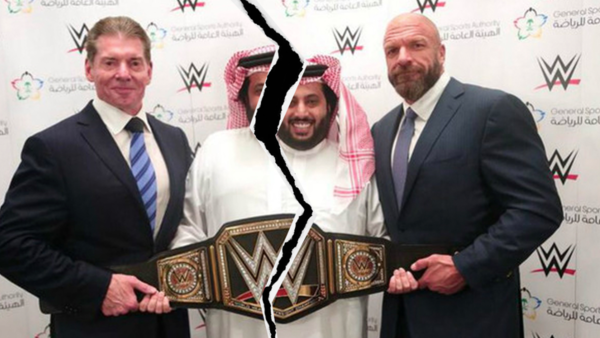10 Reasons Why WWE's Problems Aren't Going Away
Fear The Reaper.

This NXT invasion angle, even if handled correctly, is tape.
People don't like it when you criticise WWE because they are devoted to it, like followers of a sports team, which is deeply odd, since WWE bristles at the idea that it is sport, or a strict emulation of it.
But let's be clear: WWE in 2019 is a dead product, in which virtually every act dies, propped up Weekend at Bernie's-style by an in-flux TV industry desperate to find live, DVR-proof programming to combat the rise of streaming services. The irony is palpable: WWE is treated as a sports property by these people, and WWE is accelerating far beyond that premise to the extent of farce.
Let's be clearer still: WWE is in crisis because it is helmed by a 74 year-old man who doesn't sleep and is, very possibly, living with CTE or another underlying medical condition that might explain his madness. Years from now, there is an incredible chance that articles like this may take on a grim quality: all of these think-pieces analysing the output of an ill man might yet become as inadvertently cruel as he can be deliberately.
All 10 slides could bear the same headline and feature the exact same, succinct, copy and pasted content:
Because Vince Because Vince Because Vince Because Vince Because Vince Because Vince Because Vince Because Vince
But this is a series of micro issues that make up the dismal, macro picture...
10. RAW Is Still Three Hours Long

Three-hour episodes of RAW don't just make full engagement impossible: the format insidiously chips away at the star aura of so many performers.
To stand a chance of getting over on the show, a talent must be a polymath. Chris Jericho and Kevin Owens did just that in 2016 by bringing so much enthusiasm and talent to it in matches and super-entertaining promo segments, in contrast to Seth Rollins in 2019, whose weaknesses as an all-round performer were badly exposed in cringe-worthy chat show segments and corny backstage deals.
The format demands most matches settle into an uninspiring, predictable routine that only serves to pad out TV time.
Given their respective positions, Andrade and Sin Cara should not have gone 10 minutes on the October 21 edition: Andrade looked less like a star by taking so long to put away an ostensible jobber, and Cara hardly got over as an emerging force precisely because meaningless, overlong matches have rendered Andrade just "a guy". It's incredibly difficult to survive the grind because, week-on-week, the must-see aura fades. The mathematics make it so.
Entire WrestleMania builds falter because of it - Becky Lynch was less of a star on the go-home show because the slog duration forced her into several holes - and the run-time just breeds rank 50/50 nothingness.
It has done for years and years.